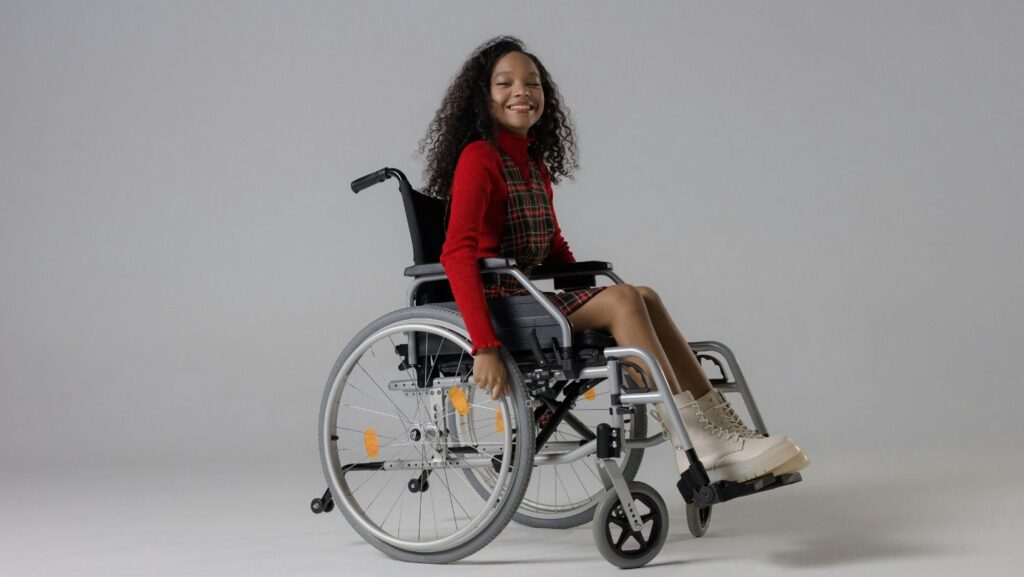When medical care moves into the home, the house itself becomes part of the care team. It must balance safety, comfort, and warmth so that a child can heal without losing the sense of home.
This kind of design blends compassion with practicality, where every decision – from furniture placement to lighting temperature – can make a difference in both health and happiness.
Creating a supportive home doesn’t mean transforming rooms into hospital wards. It means designing spaces that feel familiar and child-centered, while quietly serving medical needs in the background. Here’s how to do just that.
Start With Safety and Accessibility in Every Room
The first step in designing a home that cares is building an environment where safety and movement come naturally.
Doorways should be wide enough for mobility aids, and pathways should remain open, free from clutter or low furniture that interrupts the flow. Non-slip flooring, such as textured vinyl or rubber tile, helps prevent accidents while still feeling warm underfoot.
Bathrooms often need extra thought. Grab bars near toilets and bathtubs provide balance and stability, while adjustable showerheads allow caregivers to assist comfortably. A slip-resistant mat and hand-held sprayer can turn a difficult routine into a calm moment of care.
Collaborating with a trusted home health care agency is invaluable here. Their experience with adaptive design ensures every safety measure fits both the child’s medical requirements and the home’s natural rhythm.
Safety-focused design doesn’t have to strip away character. A soft rug under a care chair or cheerful wall colors can keep the space bright, turning practicality into quiet reassurance.
Organize Medical Care So the Bedroom Still Feels Like a Child’s Room
When a child receives treatment at home, their bedroom often becomes the main care hub. The challenge is maintaining function without losing warmth or personality.
Medical equipment can be neatly organized on a rolling cart that tucks into a corner when not in use, keeping necessities nearby but discreet. Labeled drawers for supplies and medications make daily care seamless, while hidden cord channels and softly lit outlets reduce visual clutter.

A child’s bed should be positioned to allow easy access for caregivers while still giving them a view of the window or a favorite wall mural. Natural light is important – it supports mood, happiness, sleep, and provides a sense of connection to the world outside.
Adding soft fabrics, playful art, and gentle colors reclaims the space as theirs, not their illness’s.
Protect Sleep and Recovery With Light and Sound Design
Rest is medicine, and the home environment plays a crucial role in how well a child can relax. Harsh overhead lighting or unpredictable noises can quickly undo a sense of calm.
Layered light helps restore balance: sunlight by day, warm-toned lamps in the evening, and motion-sensor night lights for safe midnight checks. Blackout curtains support deep, uninterrupted sleep, while sheers let in daylight for healthy circadian rhythms.
Sound, too, can be designed with care. Thick curtains, rugs, and fabric wall panels soften the hum of machines and footsteps. Families often find comfort in ambient soundscapes; a gentle brown noise machine can mask background activity and encourage consistent rest.
Separating noisy devices, like oxygen concentrators, into adjacent rooms with small sound barriers can further improve tranquility.
Separate Care Tech From Family Life to Lower Stress and Screen Overload
Technology is a lifeline for modern in-home care, yet too much visible equipment can make families feel like they live in a hospital. The key is thoughtful separation.
A designated area for medical devices, screens, and chargers helps keep care organized without letting it spill into shared family zones. Wires can be hidden behind furniture or guided neatly along walls, transforming clutter into calm.
Monitors, tablets, and telehealth stations should sit at adult eye level – visible to caregivers but not dominating a child’s line of sight. When the day’s care is finished, turning off screens and closing drawers helps everyone symbolically “end” the treatment portion of the day.
Parents can also maintain digital balance by following healthy tech habits such as device-free dinners or designated offline hours. Smart home assistants and voice controls can make caregiving more efficient, allowing parents to adjust lighting, temperature, or music hands-free.
But technology should support peace, not overstimulation. A caring home uses tech with intention and rests without it.
Build Independence Through Reachability and Visual Cues
Independence nurtures dignity, even for children facing health challenges. Simple modifications, like lowering coat hooks, using open bins for toys, or keeping frequently used supplies within reach, help children feel capable.
Visual cues also play a major role. Picture labels on drawers, a daily routine chart on the wall, or color-coded sections in the room guide children gently through their day. For those with limited mobility or low vision, contrasting colors on light switches and door frames make navigation easier.
Each design choice should communicate one message: You are capable of doing this on your own.

